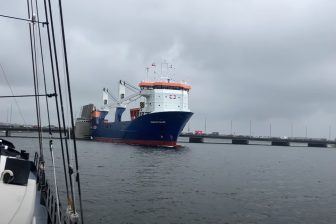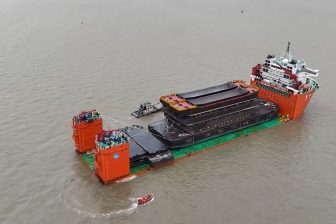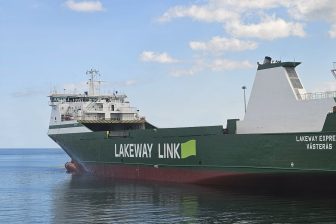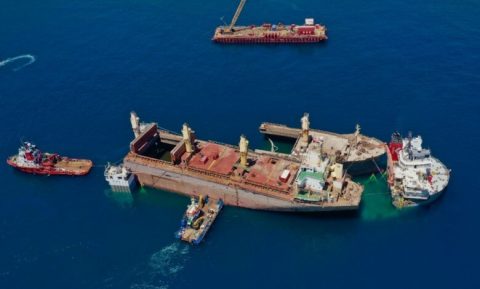
Battered OS 35 bulk carrier reaches Amsterdam towed by vessel Fjord
If everything goes according to plan, the semi-submersible heavy cargo vessel Fjord will arrive in Amsterdam in early August with 6,600 tonnes of scrap metal on board. The remains of the 184-metre-long bulk carrier OS 35 are still on board to be processed into ‘bite-sized chunks’ before a scrap yard finishes the job.
The OS 35, loaded with rebar, sank at the end of August last year after a collision with an LNG tanker in the port of Gibraltar. The wreckage was towed outside the channel and fixed in 20 metres of water by flooding ballast tanks. The salvage operation began late last year with the unloading of the approximately 40,000 tonnes of rebar that was disposed of to Overdie Metals in Zaandam, north of Amsterdam. Where the two parts of the ship will be processed is not yet known.
The recovery process
The bow of the OS 35 was positioned in the right place using chain pullers on Koole pontoons and tugs were used to bring the much heavier stern into position. On 3 July, the deck of the Fjord was above water again. Operations manager Gijs Olsthoorn of Koole is proud and happy to have the OS 35 aboard the Fjord. “I am proud of our people who got the job done despite occasionally bad weather conditions and happy that the Fjord came up calmly”, he said. He pointed out that it would not be the only sinking vessel that has gone upside down with its cargo on board.
“The moment the deck, sunk to 10 metres below the water surface, comes flush with the water surface is a very critical moment. The wind gets a hold on the cargo, if the ship then moves a little, any liquid still in the vessels may slosh about, a pump of the Fjord may break down, and when those kinds of factors come together, it can just happen. Hence we really did cheer for a while when on 3 July everything remained stable. Underwater, everything does stay in place”, Olsthoorn continued.
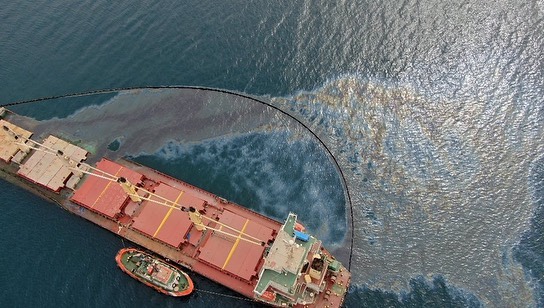
Always keeping an eye on possible leakages
Next, there was the issue of making the surroundings safe. “It takes three to four weeks to secure the whole thing. With a steel structure and chains. For those two-and-a-half-inch and three-inch chains, attachment points are welded onboard the Fjord”, Olsthoorn continued. During the whole lifting and mooring phase, a close eye is kept on whether any oil is leaking from the wreckage. “Underwater, the oil is cold and not as liquid as when the sun is on the ship’s side. An oil screen has therefore been installed around the Fjord and oil-fighting vessels are on standby. Safety inspectors are constantly monitoring everything”.
Olsthoorn calculates that 120 to 130 people were involved in the job at the height of the operation. “Our people on board the Fjord, the crews of the pontoons and tugs, the oilers, crane operators, naval architects, welders, security, a whole crew”. Once everything is fixed, with no more oil spilling out of holes here and there, the Fjord will set sail. Olsthoorn reckons the crossing from the east side of Gibraltar to Amsterdam will take about 10 days. “The Fjord sails at about five or six knots. I don’t expect really bad weather either. Summer storms are fairly rare. When the heavy summer storm Poly recently passed over the Netherlands, the wave action in the Bay of Biscay was only about one and a half metres,” he concluded.
This article was originally published on our sister publication Schuttevaer.nl, written by Willem de Niet.
You just read one of our premium articles free of charge
Register now to keep reading premium articles.


